 Panzer Model Identification and History
Panzer Model Identification and History |
 Panzer Model Identification and History
Panzer Model Identification and History |
 |
 |
|||||||
Jim Haynes has put together a great rundown of the history of the Panzer tractor. It's posted at his web site (Dandy Sales). Click on the link below to read the story. If you have anything to add, please let Jim know or send a note to info@panzertractors.com.  A few years ago, we acquired the entire collection of sales cards from Allen Lawnmower. These index cards listed model information, serial numbers and sales dates for Panzers sold from the mid '50s through the early '70s. This invaluable piece of history can help you identify your tractor's year of manufacture by comparing your serial number to like tractors and their sales dates. Please see the "Manuals & Downloads" section of the web site to view or download the database.  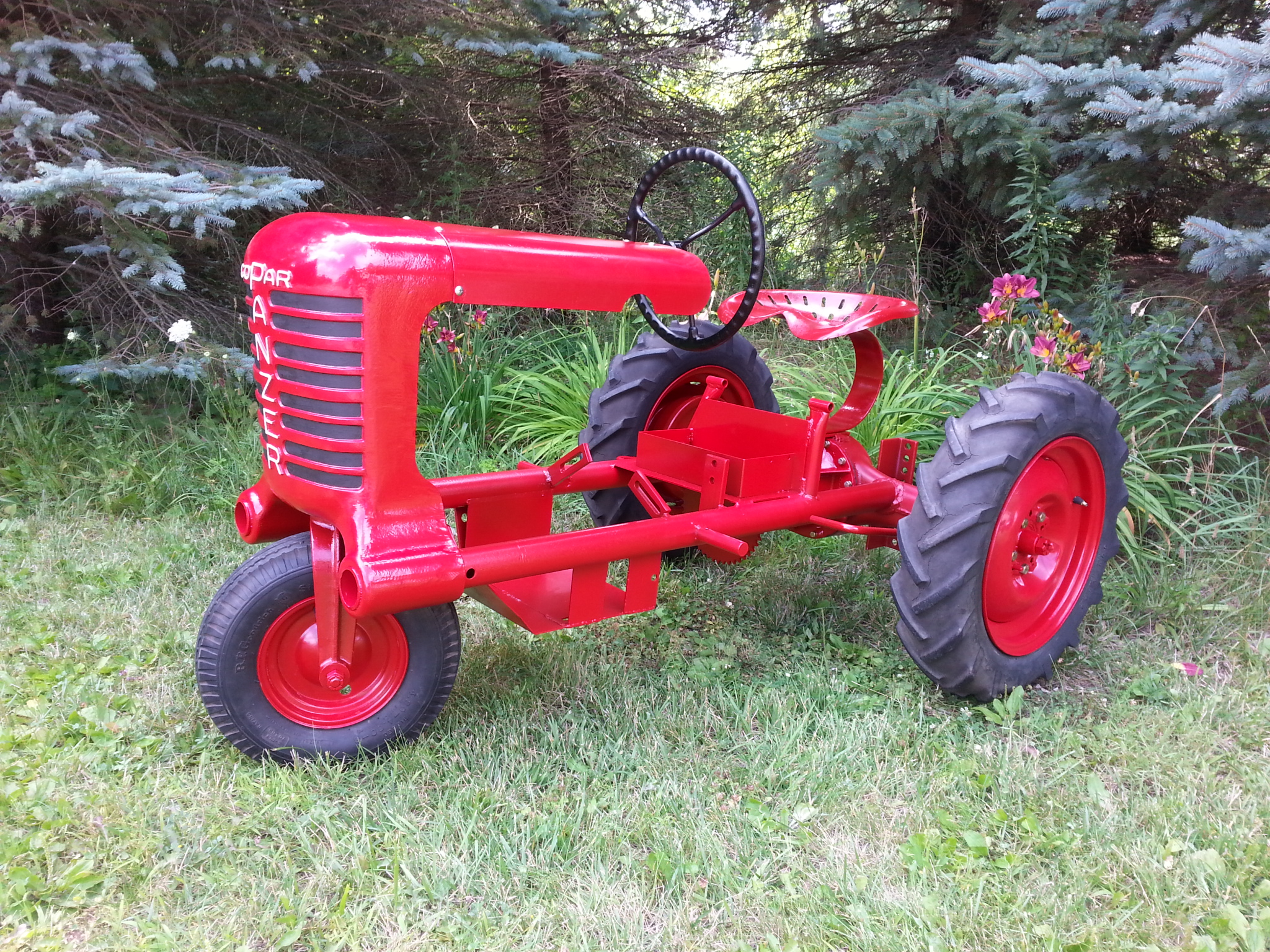 Model A (1954) Model A (1954)
The Model A was produced in College Park, Md. in 1954. Model A tractors will have a serial number stamped on the right side of the frame rail just aft of where it slides in to the front casting. As far as we can tell, approximately 350 tractors were produced in College Park, of which we have documented less than 50 to still exist. Copar was not good at keeping records, and most likely did not build the tractors in sequence. The serial number on the frame rail will be 3 digits and most likely less in value than 350. Model A Panzers were all red, powered by an 8 1/2 hp Model 23 Briggs & Stratton engine and had cast iron pulleys on both the engine and jack shaft. The jack shaft had the location "College Park, Md." and "Mod A." cast in to it, where later models had Laurel, Md. Advertising literature shows it had 6x16" tires on the rear, although at least one confirmed original Model A has 8x16" tires on it. Because they were made of cast iron and succeptable to cracking, the jack shaft casting and pulleys may not be a reliable way to identify a Model A. I have a Model A with a cast iron engine pulley and serial number stamped in the frame, but because the tractor was used extensively for mowing, it has a replacement jack shaft casting and a large pulley made of aluminum. The rims had been repainted with yellow paint and had 8x16" turf tires on it. However, when I took the tires off the rims, it was clear the original rim color was red. When production switched to Laurel, Md. in early 1955, the company began referring to them as a Model T102. Because of existing stock and repair parts, newer models of 3 and even 4 wheel Copar Panzers can have a jack shaft casting that says College Park. Jim Haynes (Dandy Sales) and I have had a lot of debates, and have agreed that only tractors produced in College Park should be called Model A. All others were built in Laurel and are called by their T100 or T200 model designations. For example, I have a 3 wheel Copar Panzer that looks exactly like a Model A. It has a serial number of 1947 stamped into the frame, but it is to the right of the tool box and not on the frame rail. It also has an aluminum engine pulley. Even though it says Mod A on the jack shaft housing, it also says Laurel, Md. Because of this, it is a T102 and not a Model A. If you want to identify your engine, there is a great source of serial numbers for Model 23 and 23A B&S engines online at http://www.asecc.com/data/briggs/data4.html I've added a picture of the info from that page below. Click on the thumbnail to view. Updated September 21, 2014
 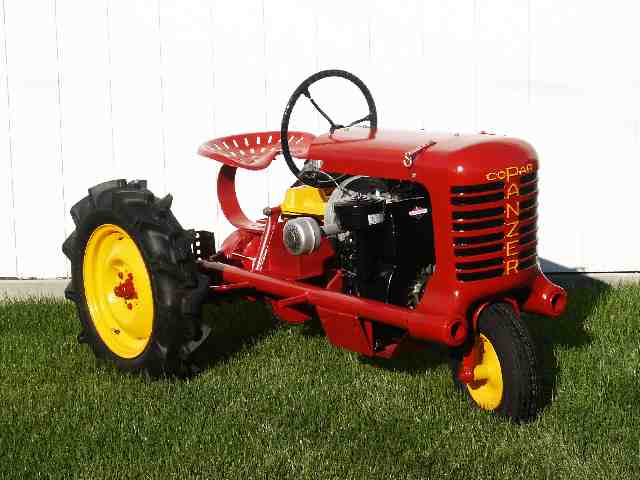 T100 and T200 Series Copar Panzers T100 and T200 Series Copar Panzers
The T100 series was the evolution of the Model A. The T102 was produced starting in 1955 at the Laurel, Md. plant. The 100 series has a single front wheel and is almost identical to the Model A except for aluminum engine and drive pulleys and yellow wheels and jack shaft housing. In 1957, a dedicated 4 wheel model called a T205 was introduced. This lasted until 1960 when Virginia Metalcrafters bought Copar and discontinued the line (see notes on the T220). The wide front end was initially sold as a kit that adapted to existing 3 wheelers, so the steering shaft came out the right side and behind the front casting. Later T200 series tractors had improved front end geometry / design and the steering arm came out betwen the frame rails in the front.  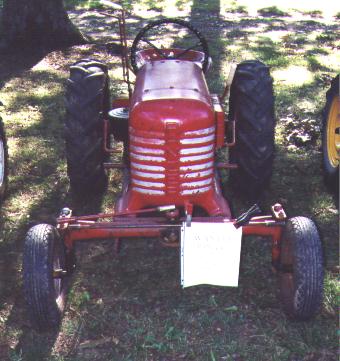 T220 Copar Panzer T220 Copar Panzer
This was the last of the '9 hp' models. It featured a 9 hp Model 23A Briggs & Stratton engine, and rear tires were 8x16" Goodyears. They were built starting in 1959, and were discontinued after the last one had been sold in August, 1961. (Sales Bulletin 61147, August 1, 1961). Since Virginia Metalcrafters purchased Copar, Inc. on January 1, 1960, the tractors were built prior to July 1, 1960. (Per SB 6091, June 13, 1960.) I believe the Panzer in the picture is a T220, but it may be a T210.  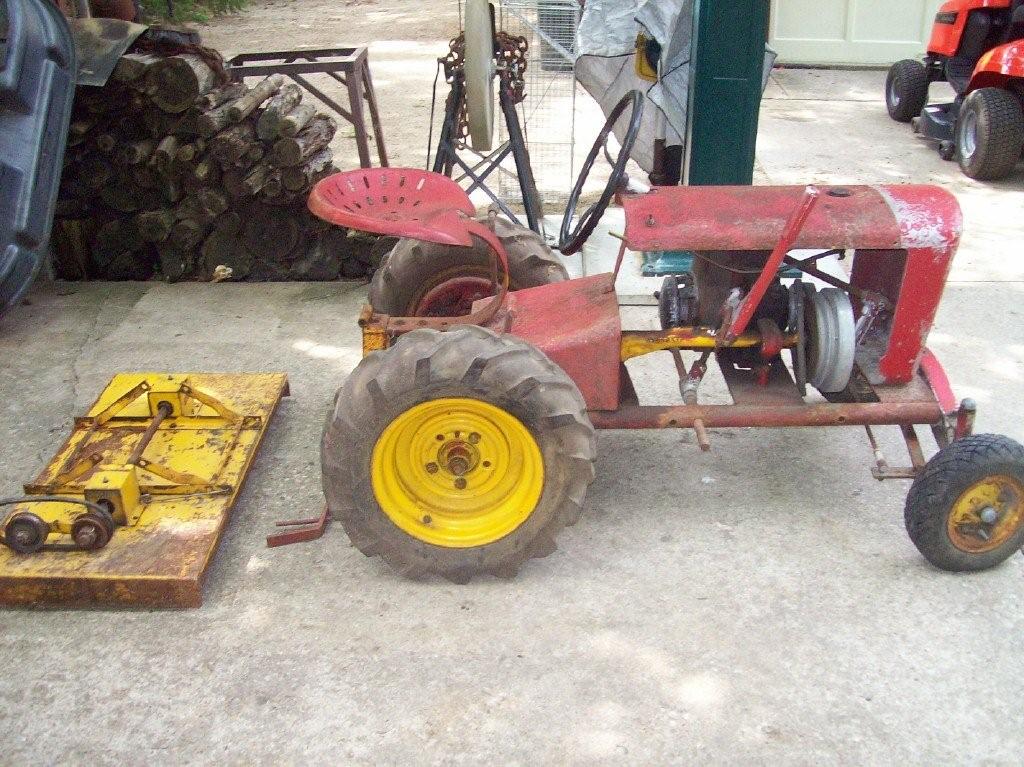 T50 Copar Panzer T50 Copar Panzer
The T50 was the first in a line of 'small' panzers, starting in 1957and running through late 1958. They have a couple of features of note:
 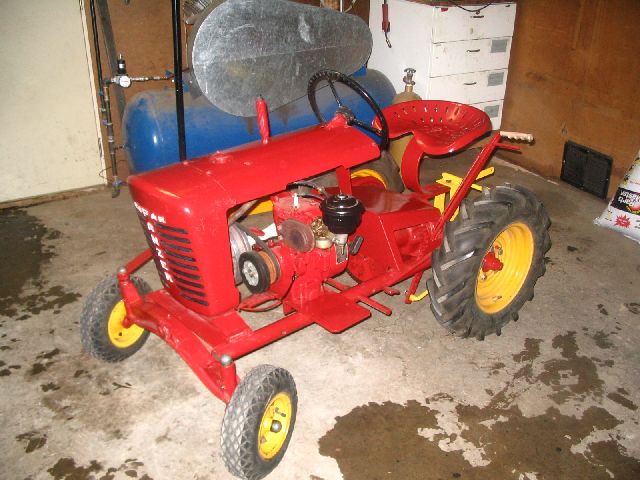 T55 Copar Panzer T55 Copar Panzer
These were very similar to the T50, and very rare. They had a bushing where the steering shaft attaches to the front aluminum grille casting. Some had a small Kohler engine as pictured. More info to follow!  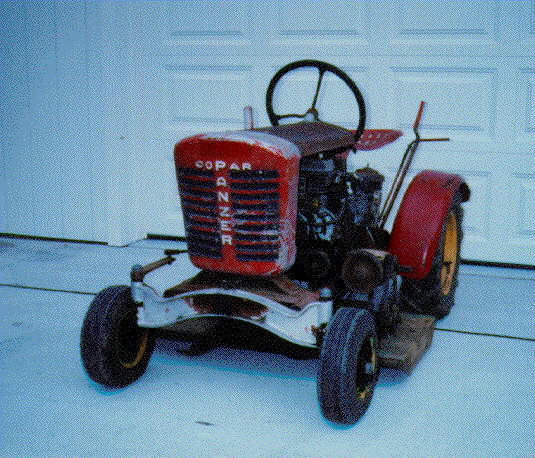 T60 Copar Panzer T60 Copar Panzer
The T60 Copar Panzer was an evolution of the T55 in that it had a more powerful and practical 5 3/4hp Briggs engine. These tractors were also red / black / white/ yellow in color with the engine plate extension on the left hand side of the frame rail for the PTO gearbox.  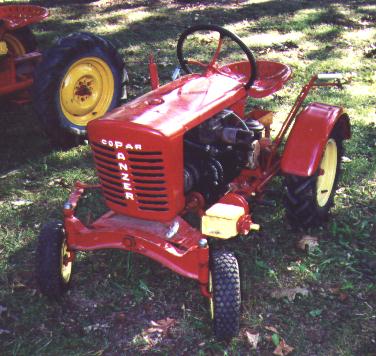 T65 Copar Panzer (1959-60) T65 Copar Panzer (1959-60)
The T65 was similar to the T50-60 series, but can be identified by the PTO bracket on the left frame rail being forward of the engine (see picture). It differs from the T70 in that the grille, front axle and clutch handle are (generally) made of cast aluminum instead of cast iron. It had a 5 3/4 hp Briggs engine. T50-T65 models had "Copar Panzer" cast into the front grille, while the later T70 just said "Panzer". The T65 model color is teal/white, but many (most?) were painted red by the owners as in this picture. The red/yellow/black/white colors shown are correct for the T50, T55 and T60 tractors. You may find some models of T65 and T70 with a 'b' or 'bes' after them. B stands for Briggs & Stratton and the 'es' stands for electric start. There was a change to the 5 3/4 hp engine to a 6 hp engine, which may have prompted the extra letters. The engines were identical except the 6hp has the 'Easy Spin' feature on the cam shaft and a slightly shaved head for higher compression. There is also an 'Easy Spin' sticker on the engine. More details on this in a future article. NOTE: The tractor shown in the picture has a 10hp Briggs engine, which is incorrect!  Coming Soon!  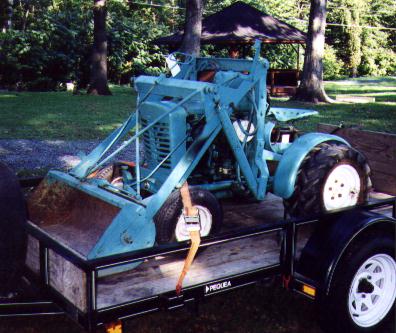 T707es and T707esl T707es and T707esl
Copar reluctantly added a 7hp Kohler (K161s) engine to their tractors in 1962, and named it the T707es. According to SB 61153A dated Oct 12, 1961, they took orders until 12/31/61 and only produced the ones that were ordered. The Kohler engine was a $49 option for a T70es. The thumbnail picture is from a T707es that is the incorrect color, and is not completely assembled. According to a later sales brochure dated May 15, 1962, there was also a T707bes model. The b designation stood for Briggs & Stratton, so it appears the 7hp version may have switched over after the initial run of Kohlers. I don't have any record of a T707es being sold with a Briggs engine, though. The 7hp Briggs was a model 170402, but that engine was a common replacement for tractors in the 1960s and 70s. In August of 1962, the T707esl model was created and advertised as a 1963 model (SB 62168, Aug 13, 1962). The loader in the picture is the same one in the sales brochure. Pictures of the T707esl tractor in SB 62169 (8/27/62) appear to show an air cleaner from a Briggs engine, so these tractors may not have been built with the Kohler engine.
 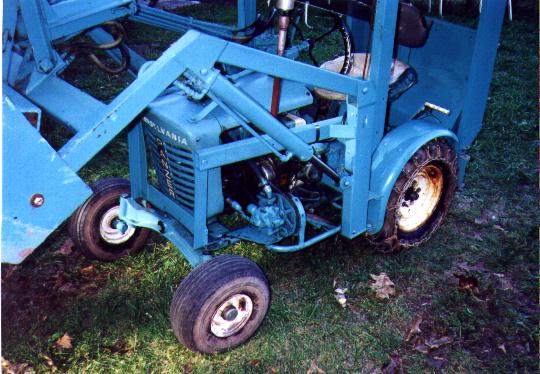 T75 and T75esl Pennsylvania Panzer T75 and T75esl Pennsylvania Panzer
The T75 started assembly on November 1, 1963 as a 1964 model, according to SB 63188 11/1/63. They featured a 6hp Briggs 142302 model engine. Later in 1966, that engine was replaced with the 7hp Briggs model 170402, according to the Allen Mower database.  The T758es tractor is a T75 model with an 8hp Kohler K181s engine. Production started in mid-November, 1963, as they were waiting for an order of engines to arrive. The first T758es' had the word 'Panzer' cast into the grille. In later models, the word Panzer was replaced with a sticker. | Return Home | Model ID / Panzer History | Panzer Store | Panzer Stories | Restoration and Performance | Panzer Pictures | Club Links | Donations Accepted | Contact Us | |
||||||||
 |
 |
